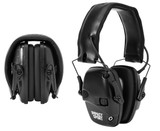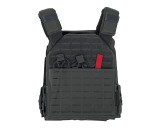Sizing Armor Plates: A Comprehensive Guide
Introduction
Selecting the right size for armor plates is crucial for ensuring effective protection and comfort. Ill-fitting armor can leave vital areas exposed or hinder movement, compromising the wearer’s safety. This guide will detail the steps and considerations for properly sizing armor plates, including key nuances and practical tips.
Importance of Proper Sizing
The primary goal of armor plates is to protect vital organs, primarily the heart and lungs. Properly sized armor plates should cover these areas without restricting movement or causing discomfort. Incorrect sizing can lead to inadequate protection or reduced mobility, both of which can be life-threatening in high-risk situations.
Steps to Size Armor Plates
To size armor plates correctly, follow these steps:
- Measure Chest Width and Height: Determine the width and height of the chest to ensure the armor plate covers the vital areas adequately.
- Consider Torso Length: The length of the torso affects how the plate sits on the body. A plate that is too long can impede movement, while one that is too short may leave the abdomen exposed.
- Account for Body Shape: Different body shapes require different plate dimensions. Ensure the plate fits well against the contours of the body.
Measuring Chest Width and Height
To measure chest width and height, use a flexible measuring tape:
- Chest Width: Measure from the left to the right nipple. This measurement ensures the plate covers the width of the chest adequately.
- Chest Height: Measure from the collarbone down to about 2-3 inches above the belly button. This height ensures the plate covers the upper vital organs without hindering movement.
Chest Width and Height Measurement Table
| Measurement | Description | Example Value (inches) |
| Chest Width | Measure from left to right nipple | 10-12 |
| Chest Height | Measure from collarbone to 2-3 inches above belly button | 12-14 |
Torso Length Considerations
Torso length affects how the armor plate will sit on the body. The plate should sit high enough to cover the upper chest but not so low that it interferes with sitting or bending.
Torso Length Table
| Torso Length (inches) | Recommended Plate Height (inches) |
| 15-17 | 10 |
| 17-19 | 12 |
| 19-21 | 14 |
Accounting for Body Shape
Different body shapes, such as athletic, stocky, or slender builds, influence the fit of armor plates. Plates should conform to the body's natural shape without gaps or excessive pressure points.
- Athletic Build: Look for plates with a more curved design to fit the contours of the chest and torso.
- Stocky Build: Choose plates with a wider and shorter dimension to cover the broader chest and shorter torso.
- Slender Build: Opt for narrower and longer plates to ensure full coverage without being too wide.
Armor Plate Sizing by Body Shape
| Body Shape | Plate Dimensions (inches) | Description |
| Athletic | 10x12 | Curved for chest contours |
| Stocky | 11x14 | Wider and shorter for broad chest |
| Slender | 9x11 | Narrower and longer for full coverage |
Key Nuances When Choosing Armor Plate Size
- Overlap with Soft Armor: Ensure that the hard armor plates overlap with soft armor vests for comprehensive coverage.
- Movement and Flexibility: Plates should not restrict movement. Test different positions (sitting, bending, reaching) to ensure comfort and mobility.
- Weight Distribution: Properly sized plates should distribute weight evenly across the shoulders and upper torso, preventing fatigue.
- Compatibility with Carrier: Ensure the plates fit securely within the plate carrier without excessive movement.
Practical Tips
- Try Before You Buy: If possible, try on different sizes and shapes to find the best fit.
- Consult Manufacturer’s Sizing Guide: Different manufacturers may have slight variations in sizing. Always refer to their specific guides.
- Consider Adjustability: Some plate carriers offer adjustable features to fine-tune the fit of the plates.
Summary Table for Sizing Armor Plates
| Step | Action | Example Value (inches) |
| Measure Chest Width | Left to right nipple | 10-12 |
| Measure Chest Height | Collarbone to 2-3 inches above belly button | 12-14 |
| Determine Torso Length | Collarbone to waist | 15-21 |
| Select Plate Based on Body Shape | Refer to body shape guide | Various |
Conclusion
Choosing the right size for armor plates is essential for effective protection and comfort. By accurately measuring chest width, chest height, and torso length, and considering body shape and specific needs, you can ensure optimal coverage and mobility. Always refer to manufacturer guidelines and test the fit to find the best option for your body and intended use. Properly sized armor plates can make a significant difference in life-threatening situations, providing peace of mind and enhanced safety.
Recent Posts
-
Understanding Ballistic Shield Ratings and Their Applications
The Trusted Name in Tactical Defense - BattleSteel® When it comes to protecting those who protect us …2025-04-19 -
The Importance of Hearing Protection in Tactical Environments
The Legacy of BattleSteel® BattleSteel® is a trusted name in the world of tactical defense equipment …2025-04-14 -
How to Properly Fit and Wear a Plate Carrier
About BattleSteel and Their Mission BattleSteel is a trusted name in the tactical gear industry, ren …2025-04-11



